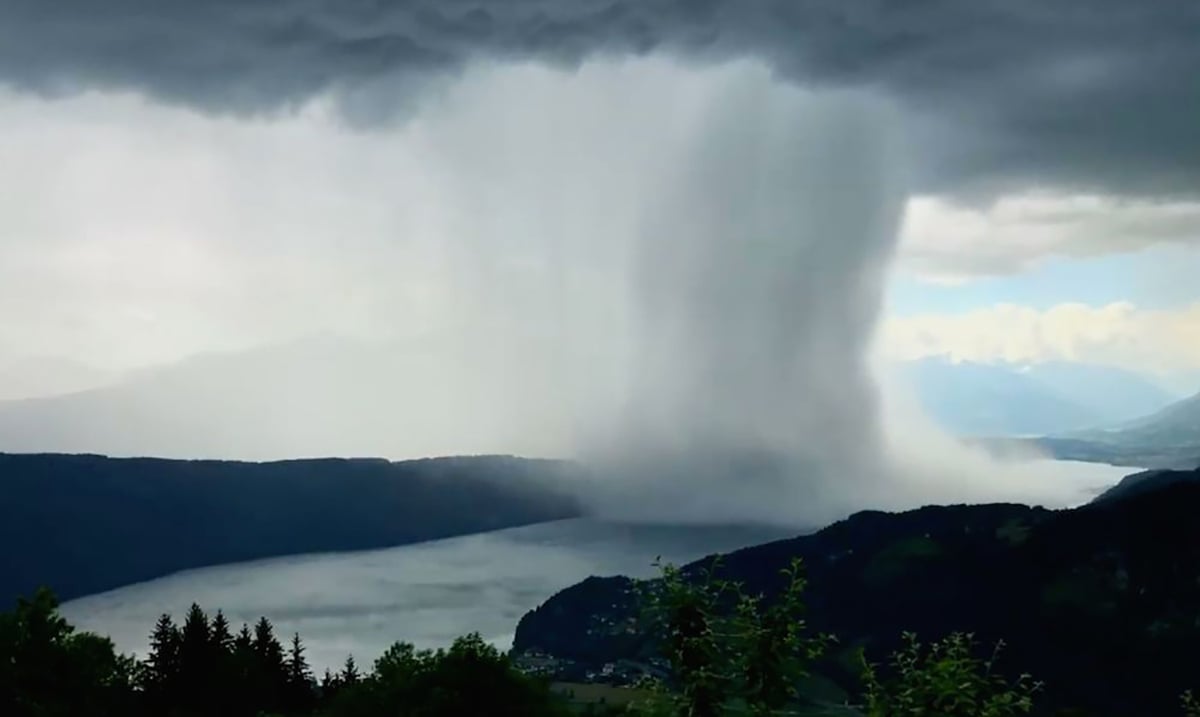I recently came across a video of a timelapse online posted by Peter Maier and titled the ‘Tsunami from Heaven.’ It is a timelapse of an amazing rainstorm microburst. Now, for those who do not know microbursts are intense small-scale downdrafts produced by rain showers. There are two kinds of them. Some are wet and others are dry.
These microbursts go through three stages and often come with high winds that can literally knock over adult trees. They usually don’t last more than a few seconds but can truly change so much within that time. Peter Maier as mentioned above is an amateur filmmaker and he truly did this moment justice.
Microbursts are not as common as you might think and it takes a lot to create one. While they might not sound as beautiful as they are I assure you they are quite captivating. If you haven’t ever seen this occurrence, you are in for a treat.
Weather.com wrote as follows breaking down what goes into making this kind of thing happen:
A microburst is a downdraft (sinking air) in a thunderstorm that is less than 2.5 miles in scale. Some microbursts can pose a threat to life and property, but all microbursts pose a significant threat to aviation. Although microbursts are not as widely recognized as tornadoes, they can cause comparable, and in some cases, worse damage than some tornadoes produce. In fact, wind speeds as high as 150 mph are possible in extreme microburst cases.
There are a handful of factors that cause microbursts to develop, including mid-level dry air entrainment, cooling beneath the thunderstorm cloud base, sublimation (occurs when the cloud base is above the freezing level), and the existence of rain and/or hail within the thunderstorm (i.e. precipitation loading). Some microbursts are driven by a combination of these factors while others may only be driven by one factor. Due to this, microbursts can be subdivided into three primary types — wet, dry, and hybrid. Cooling beneath the thunderstorm cloud base and sublimation are the primary forcing mechanisms with dry microbursts. Dry microbursts typically occur with very little precipitation at the surface or aloft, hence the dry type. Wet microbursts, on the other hand, are primarily driven by entrainment of mid-level dry air and precipitation loading. Hybrid microbursts possess characteristics of both wet and dry microbursts. They are forced in the mid-levels by dry air entrainment and/or precipitation loading and in the low-levels by cooling beneath the cloud base and/or sublimation.
Please feel free to check out this amazing time-lapse below. What do you think? Isn’t it marvelous?
Featured Video Via: Peter Maier

